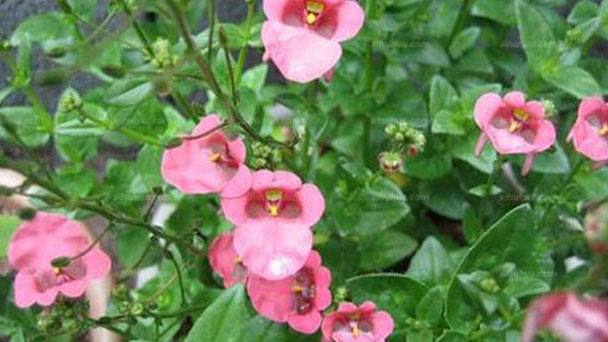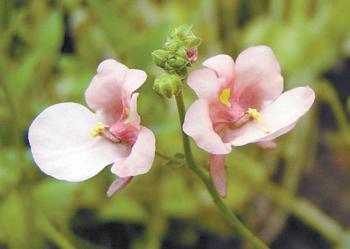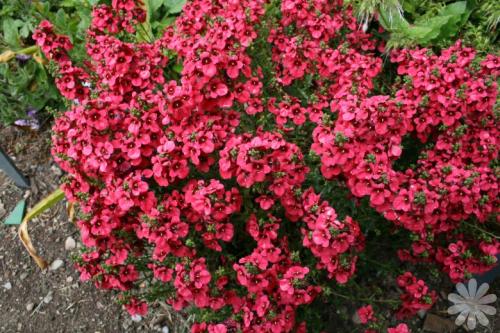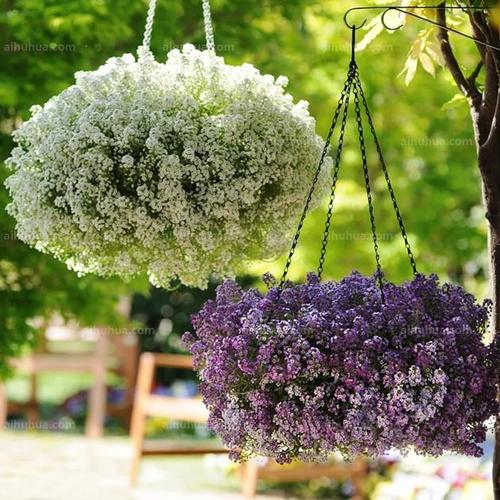Diascia Plant (twinspur) profile
Written by Maggie
Sep 27 2021

Diascia Plant, also called twinspur, a perennial herb of the family Sophora, plants 25 to 40 cm tall, slender stems, single opposite leaves, leaves triangulate oval, racemose, small flowers with two spines, colorful, red, pink, white, etc. The sowing period is in spring. Diascia Plant is versatile and has unusual flower shapes that can be used for potting or arranging flower beds.
Diascia Plant Picture

Diascia Plant info
| Botanical Name | Diascia |
| Common Names | Twinspur |
| Plant Type | Annual flower |
| Sun | Full sun to part shade |
| Hardiness Zones | 9 to 11 |
| Flower color | Pink, white, coral, orange, red, plum |
| Native Area | South Africa |
| Mature size | 6 to 12 inches tall and 18 inches wide |
Diascia Plant Characteristics
Diascia Plant is a perennial herb, plant 25 to 40 cm tall, slender stems, opposite leaves, leaves triangulate oval, racemose, two small flowers, colorful, red, pink, white, etc. diascia plant is versatile and has unusual flower shapes that can be used for potting or arranging flower beds. Plant height :25-35cm Crown width :30-35cm.
Diascia Plant Habits
Diascia Plant prefers full sun, or half shade.
How to grow and care for Diascia Plant
Light Care
You'll get the most blooms by means of retaining your diascia Plant in full sun, however in truly warm weather, the plant will do pleasant when grown in partial shade, especially afternoon shade.
Soil Care
Diascia Plant Plant prefers a barely acidic soil pH. Something between 6.0 and 6.5 appears to be ideal. The soil needs to be fertile and well-drained.
Water Care
Diascia Plant Plant wishes normal water, however it doesn’t like to take a seat in moist soil. If developing in a container, make positive there are right drainage holes. As an established guide, water when the pinnacle 1 inch of soil or potting combine feels dry.
Temperature & Humidity Care
Diascia Plant prefers cooler temperatures, and its vegetation quality in the spring and fall. If your vegetation begins to fade in the heat, reduce them again to a few inches and maintain them watered. They will perk lower back up when it cools off.
Diascia Plant Plant is truly frost-tolerant and can be saved going properly into the fall. If you’re inclined to put your pots into the storage every time a challenging frost threatens, they will remain even longer.
Fertilizer Care
A time-release fertilizer looks to work best. If you decide upon hand-fertilization, don’t overdo it or you’ll get leggy plants. Leggy vegetation can be pinched lower back to hold them fascinating and full.
Growing Diascia Plant in containers
Diascia Plant is a herbal for containers. You can fill a complete container with one range or use a single Diascia Plant as your spiller in a combined container. Diascia Plant additionally makes a beautiful edging plant and will elegantly flop over sidewalks and partitions or all through rock gardens.

Growing Diascia Plant from seeds
It's uncommon to locate seed for Diascia Plant, however there are some out there. Start seeds indoors, about six to eight weeks earlier than your final predicted frost. In heat climates, Diascia Plant can additionally be direct seeded. The hybrid Diascia Plant won’t develop authenticity from seed.
Diascia Plant seed wishes to germinate, so simply press the seed firmly on the pinnacle of the soil; don’t cowl it. It’s very vital to preserve the soil moist considering there’s nothing insulating the seed. The seeds need to germinate inside two weeks.
Varieties of Diascia Plant plant
Diascia Plant barberae 'Blackthorn Apricot': Soft crimson flowers; acquired the Royal Horticultural Society Award of Garden Merit (AGM)
Diascia Plant hybrid 'Dew Drops': Clear white with a yellow center, a Proven Winners plant
Diascia Plant hybrid ‘Flirtation Orange’: Another Proven Winners plant, with gentle orange flowers
Diascia Plant integerrima 'Pink Adobe': A tall, gentle crimson Diascia Plant that is bloodless hardy to region 5
Diascia Plant propagation
Diascia Plant is propagated by sowing and cutting, sowing in the autumn. Cuttage can cut 5~7 CMS long branches, the first water inserted to promote long roots and then implanted in the medium. Whether sowing or cutting, the core should be plucked at the growth and development stage of seedlings, which can promote the plant type to be more prosperous.
Diascia Plant Disease Control
Pay attention to gray mold in the rainy season and other high humidity seasons.
Diascia Plant Uses
Diascia Plants can be divided into two categories according to the plant characters: erect and creeping. The height of erect varieties is about 30~40 CMS, suitable for pot and flower beds. Because the flowers are small, it is suitable to arrange around to increase the ornamental value. Stolon varieties are about 15~20 cm height, suitable for hanging pots and ground cover plants.
When Diascia Plant is used in combination potting applications, care should be taken not to overcrowd the plant to avoid disease due to poor ventilation.

Latest Updated
- Benefits of Bugleweed - 7 Science-backed Health Benefits
- Bugleweed Dangers & Side Effects - Is It Poisonous?
- How to Plant Evergreen Trees - What You Should Know
- When to Plant Evergreens - Grow Guide for Evergreen Trees
- 12 Wonderful Evergreen Shrubs for Your Garden
- 12 Popular Evergreen Plants with Pictures for Beginners
- When And How To Prune A Lilac Bush Like a Pro
- How to Grow & Care for Lilac Vine (Hardenbergia Violacea)
- Japanese Lilac Tree (Syringa Reticulata) Care & Propagation Guide
- Shumard Oak Pros and Cons - What to Know
Popular Articles
- Winter maintenance of Antirrhinum Majus
- How to Grow Terminalia Mantaly Tree
- How to Grow and Care for Crossostephium Chinense
- How to grow Antirrhinum Majus in spring
- Peristeria Elata (Dove Orchid) Profile: Info & Care Guide
- Underwatered Snake Plant (Sansevieria Trifasciata) - Signs And How To Fix
- How to Care for Brazilian Jasmine Plant (Mandevilla Sanderi)
- How to Grow & Care for Graptopetalum Purple Delight in Summer
- Rosa Chinensis (China Rose): Plant Growing & Care Tips
- How to Care for Baby Sun Rose (Aptenia Cordifolia)